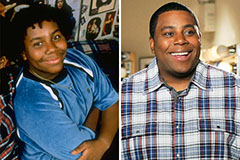A Comprehensive Guide to the current Patterns and Techniques Used by Effective Internet Designers
The combination of dark setting and advanced typography additionally plays a vital role in boosting individual interaction. As we discover these elements, it is crucial to consider exactly how they collectively influence user experience and contentment, elevating questions regarding what really specifies a successful layout in today's affordable atmosphere (Web Designer in Meerut).
Embracing Receptive Design
In a progressively electronic world, welcoming responsive design has actually become vital for producing effective internet experiences. With the expansion of gadgets ranging from smartphones to big desktop screens, an internet site's ability to adapt perfectly to various display dimensions is critical. Receptive layout makes certain that content is visually appealing and obtainable, no matter of the individual's tool, enhancing customer experience and interaction.
Using liquid grids, adaptable pictures, and CSS media queries, receptive style permits internet designers to produce layouts that adjust instantly to differing display screen settings. This versatility not just enhances usability yet also positively affects seo (SEO), as internet search engine prefer mobile-friendly sites in their rankings. Moreover, a solitary receptive web site simplifies upkeep initiatives, getting rid of the requirement for separate mobile and desktop versions, thereby lowering development expenses and time. Web Designer in Meerut.

Using Minimal Aesthetic Appeals
Emphasizing simpleness, minimal visual appeals have actually gained significant grip in website design as a way to enhance customer experience. This design viewpoint concentrates on stripping away unnecessary aspects, enabling customers to connect with material without diversion. By utilizing enough white room, clear typography, and a limited color scheme, internet designers create visually attractive interfaces that assist individuals towards key details.

In addition, minimalist appearances add to much faster filling times and improved performance, as less graphic elements lead to lighter web pages. This aspect is crucial in today's hectic electronic landscape, where individual retention is closely tied to just how swiftly content comes.
As brand names progressively seek to convey messages succinctly and efficiently, minimal style becomes an effective device. When implemented thoughtfully, it can produce a harmonious equilibrium between form and feature, ultimately promoting a seamless customer experience that reverberates with audiences.
Executing Dark Mode
The application of dark setting in website design has actually gained appeal as users increasingly seek extra comfortable watching experiences, particularly in low-light atmospheres. This layout technique not just boosts aesthetic comfort however likewise supplies visual allure, making web sites a lot more appealing. By incorporating dark mode, designers can considerably lower eye pressure, especially during prolonged use, resulting in boosted individual satisfaction.

To efficiently execute dark setting, designers should prioritize shade contrast and readability. Utilizing high-contrast text shades versus dark backgrounds ensures that content continues to be clear, while refined variants in shades can develop depth and improve the general customer experience. Moreover, developers should take into consideration the color scheme; cooler tones usually work well in dark mode, giving a smooth and contemporary appearance.
Along with appearances, efficiency is a crucial aspect. Dark mode can add to energy financial savings on OLED screens, which is a consideration for ecologically mindful style. Developers must also supply customers with a simple toggle alternative to switch over in between dark and light settings, satisfying diverse choices. By welcoming dark setting, web developers can produce a additional info more visually appealing click here for info and inclusive digital landscape.
Concentrating On Individual Experience
Focusing on user experience (UX) is necessary in modern-day website design, as it straight impacts customer fulfillment and engagement. A properly designed site prepares for individual needs, using intuitive navigating and seamless communications. Understanding the target market through individual research and screening allows designers to develop tailored experiences that reverberate with visitors.
One trick element of reliable UX is guaranteeing that internet sites are available and receptive throughout different tools and systems. This versatility not just boosts functionality yet also improves search engine optimization efficiency, as search engines prefer mobile-friendly websites. Additionally, utilizing constant layout elements, such as color pattern and switch styles, helps individuals browse easily, reducing cognitive tons.
An additional vital consideration is the speed of the web site. Slow-loading web pages can bring about high bounce rates, undermining the general individual experience. By enhancing photos, making use of efficient coding practices, and leveraging content shipment networks, designers can dramatically boost lots times.
Leveraging Advanced Typography
Harnessing the power of advanced typography can transform a site's visual charm and improve general user interaction. By employing techniques such as variable fonts, designers can create a more receptive and vibrant typographic pecking order that adapts perfectly across different devices. This adaptability not just boosts readability however likewise enables a more natural layout aesthetic.
In addition, the critical usage of white area in typography can substantially influence user actions. Enough spacing in Recommended Site between letters, paragraphs, and lines attracts interest to key messages, enabling customers to navigate content effortlessly. Combined with a thoughtful color scheme, typography can stimulate specific feelings and set the tone for the entire internet site.
Moreover, integrating personalized font styles-- while ensuring they continue to be web-safe-- adds individuality and character to a brand's identification. The careful choice of font pairings also plays a crucial duty in maintaining aesthetic harmony while boosting the user experience.
Verdict
Finally, the assimilation of responsive layout, minimalist appearances, dark mode, customer experience optimization, and advanced typography makes up the structure of efficient internet design in modern practice. These aspects jointly enhance functionality, aesthetic appeal, and individual engagement, promoting contentment and interaction. As internet layout remains to progress, adherence to these concepts will stay crucial for achieving successful end results and meeting the diverse requirements of customers across various gadgets and systems.
Receptive design guarantees that material is visually attractive and obtainable, regardless of the user's gadget, improving individual experience and involvement.
Emphasizing simplicity, minimalist aesthetic appeals have actually gotten substantial grip in internet layout as a method to enhance user experience.The implementation of dark mode in web design has acquired popularity as users progressively seek much more comfortable seeing experiences, especially in low-light atmospheres.Prioritizing user experience (UX) is important in contemporary web design, as it directly influences customer contentment and involvement.In verdict, the assimilation of receptive style, minimalist aesthetics, dark mode, customer experience optimization, and progressed typography makes up the foundation of effective internet style in contemporary practice.
 Kenan Thompson Then & Now!
Kenan Thompson Then & Now! Gia Lopez Then & Now!
Gia Lopez Then & Now! Sydney Simpson Then & Now!
Sydney Simpson Then & Now! Erik von Detten Then & Now!
Erik von Detten Then & Now! Michelle Trachtenberg Then & Now!
Michelle Trachtenberg Then & Now!